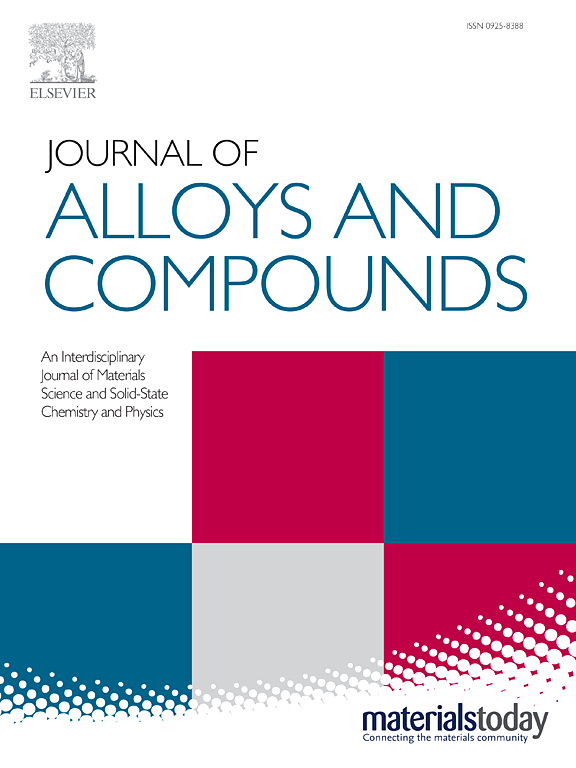Deformation mechanisms and evolution of grain boundaries in hot extruded heterogeneous Al-Cu-Mg alloys
IF 5.8
2区 材料科学
Q2 CHEMISTRY, PHYSICAL
引用次数: 0
Abstract
The grain boundary characteristics of different microcomponents of isomeric aluminum alloys determine their properties, but the grain boundary evolution and deformation mechanism of multi-scale grains need to be further clarified.In this paper, the Al-Cu-Mg alloys sheet was fabricated by sintering of coarse and fine particle size powder and hot extrusion. The results show that when the proportion of coarse powder is 30 % and 50 % respectively, the special structure of elongated coarse crystal band and fine crystal distribution will be formed after hot extrusion, and it shows excellent mechanical properties.Among the three groups of samples, the sample with 30 % coarse powder (CG30) exhibits the highest ultimate tensile strength at 340.23 MPa, representing a 19.58 % increase in tensile strength compared to the sheet prepared using pure fine powder. This enhancement can primarily be attributed to the reduction in the texture intensity of the < 110 > oriented texture of coarse crystals, thereby eliminating the pronounced preferred orientation of grains and mitigating localized stress concentration. The sample with 50 % coarse powder (CG50) showed the best elongation, reaching 27.50 %, which was increased by 32.79 % compared with CG0. The high grain boundary energy storage of the heterogeneous structure promoted the opening of the OC slip system, and the stable grain direction avoided the local softening or hardening caused by the preferred orientation, and the material elongation was improved. The incorporation of coarse powder enhances the misorientation at the grain boundaries and alters the stress distribution within these regions and affects the opening of different slip modes and the change of texture strength, which helps to improve the mechanical properties of heterogeneous aluminum alloy sheet and provides a new idea for the forming and manufacturing of high-performance heterogeneous Al-Cu-Mg alloys sheet.
求助全文
约1分钟内获得全文
求助全文
来源期刊

Journal of Alloys and Compounds
工程技术-材料科学:综合
CiteScore
11.10
自引率
14.50%
发文量
5146
审稿时长
67 days
期刊介绍:
The Journal of Alloys and Compounds is intended to serve as an international medium for the publication of work on solid materials comprising compounds as well as alloys. Its great strength lies in the diversity of discipline which it encompasses, drawing together results from materials science, solid-state chemistry and physics.
 求助内容:
求助内容: 应助结果提醒方式:
应助结果提醒方式:


